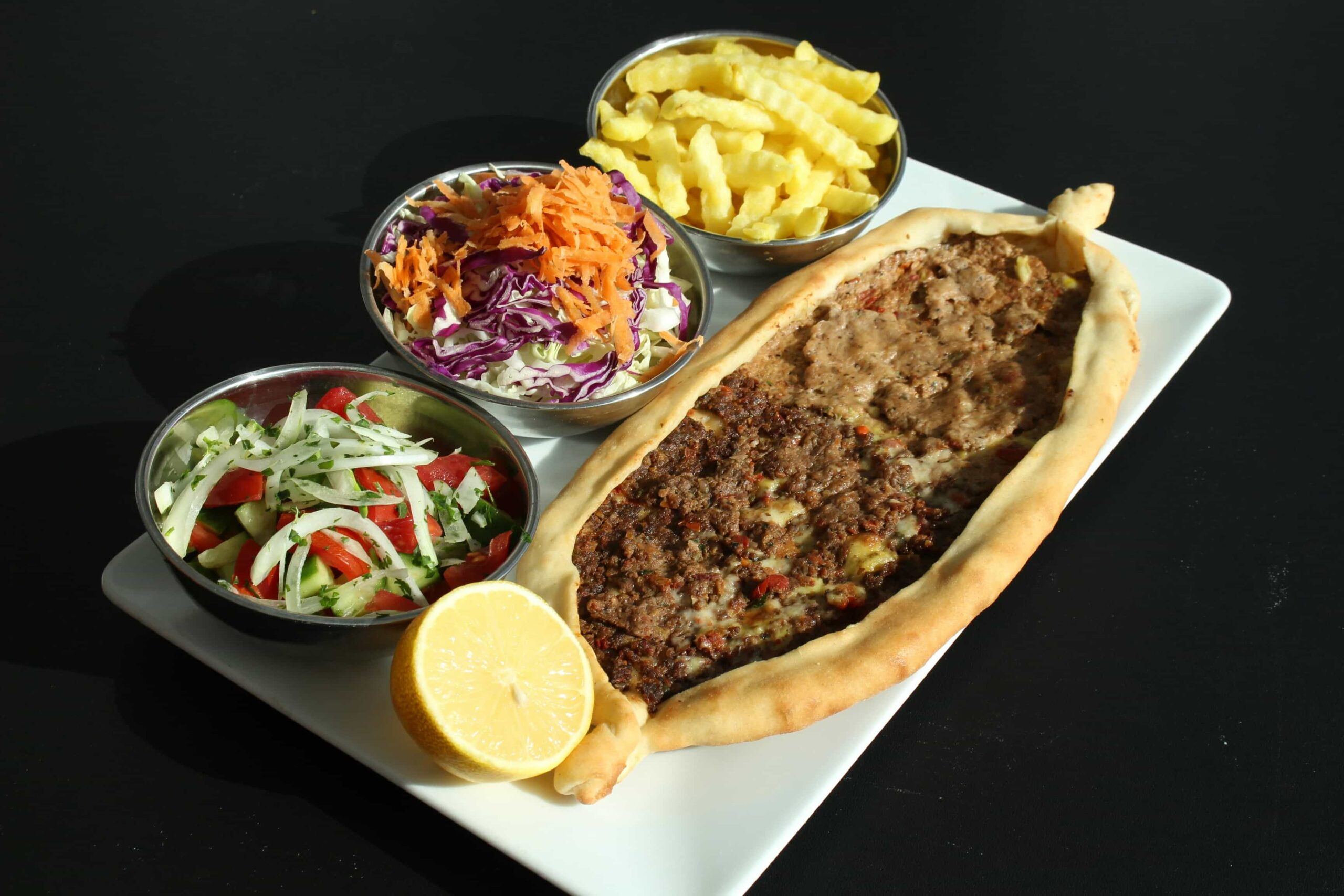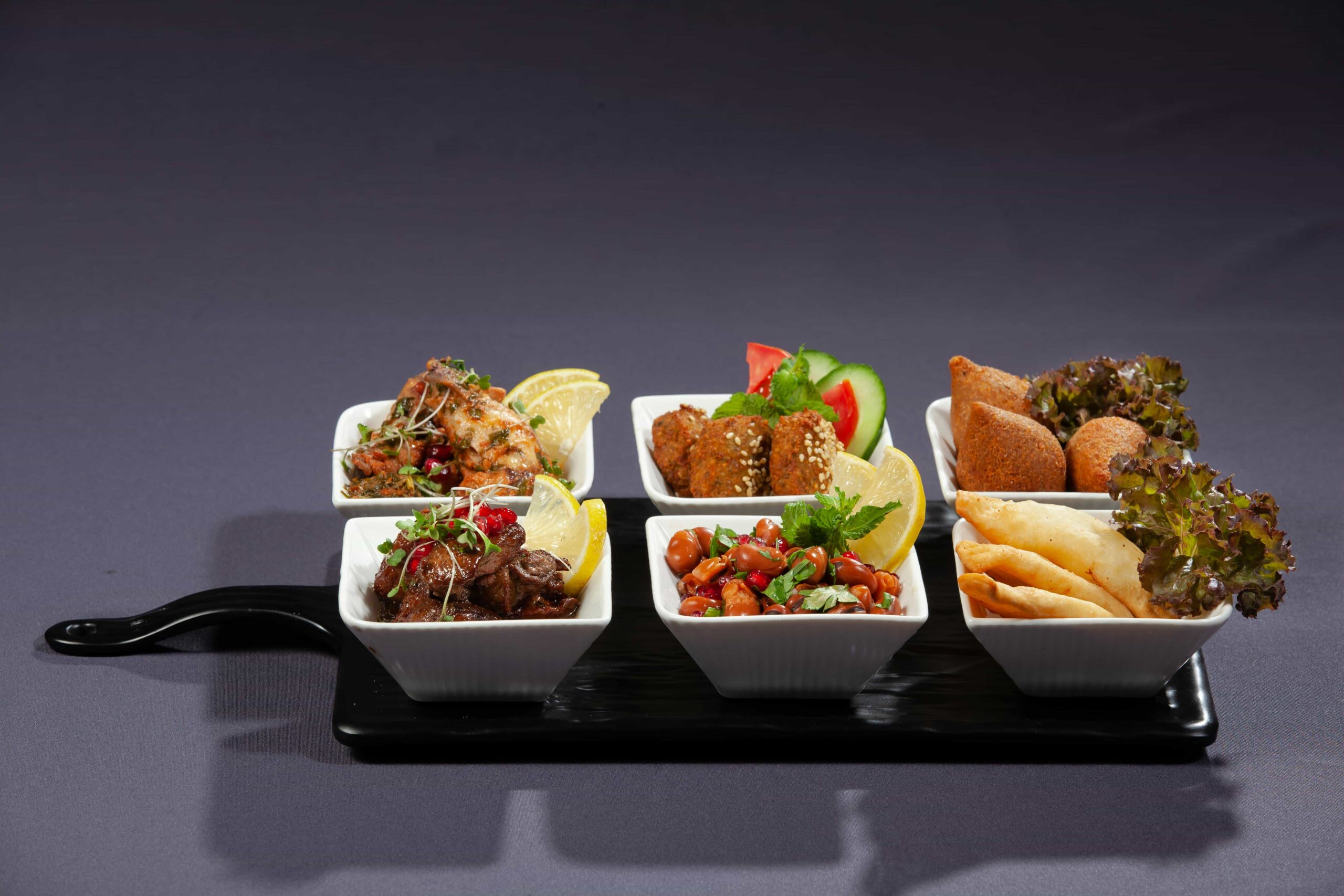Lebanese Cuisine Guide: Authentic Flavors & Cultural Heritage
Did You Know?
Lebanon produces over 180,000 tons of olive oil annually, with some olive trees dating back over 1,500 years. These ancient groves continue producing the liquid gold that forms the foundation of authentic Lebanese cooking.
Walking into my first authentic Lebanese restaurant fifteen years ago—honestly, I was completely unprepared for what hit my senses. The aroma of charcoal-grilled lamb mixed with fresh herbs, that distinctive scent of sumac, and something I couldn’t quite place at the time (turned out to be za’atar) created this incredible olfactory symphony that still makes my mouth water just thinking about it.
Lebanese cuisine represents far more than just food; it’s a living testament to thousands of years of cultural exchange, family traditions, and genuine hospitality that runs deeper than most people realize. Having spent considerable time exploring this culinary landscape—both in Lebanese kitchens here and during two memorable trips to Beirut—I’ve come to understand that authentic Lebanese cooking isn’t just about following recipes. It’s about understanding the soul of a culture that values gathering, sharing, and celebrating life through incredibly flavorful, wholesome food.
What strikes me most about Lebanese cuisine is how it perfectly embodies the Mediterranean approach to eating—fresh, seasonal ingredients prepared with techniques passed down through generations, yet flexible enough to accommodate modern dietary needs. The Lebanese have mastered something that many cuisines struggle with: creating food that’s simultaneously comforting and sophisticated, healthy and indulgent.
This comprehensive guide draws from extensive research1, conversations with Lebanese home cooks and professional chefs, and my own journey learning these incredible flavors. We’ll explore everything from the foundational ingredients that make Lebanese food so distinctive to practical tips for recreating these authentic tastes in your own kitchen—regardless of your experience level or dietary restrictions.
Why Lebanese Cuisine Matters Now
In our current food landscape obsessed with quick fixes and processed convenience, Lebanese cuisine offers something genuinely refreshing: a culinary tradition built on fresh ingredients, minimal processing, and cooking methods that actually enhance rather than mask natural flavors. Plus, it’s incredibly plant-forward—something I’ve grown to appreciate even more as I’ve learned about sustainable eating practices.
Whether you’re completely new to Middle Eastern flavors or someone who’s been enjoying Lebanese restaurants for years but wants to understand the deeper cultural significance behind these incredible dishes, this guide will give you both the practical knowledge and cultural context to truly appreciate one of the world’s most vibrant culinary traditions.
Essential Ingredients & Cultural Heritage
Let me be honest—when I first attempted Lebanese cooking at home, I made the classic mistake of thinking I could substitute ingredients freely. Spoiler alert: using dried oregano instead of fresh za’atar doesn’t remotely produce the same results. Lebanese cuisine relies on specific ingredients that have been cultivated in the Levantine region for centuries, and understanding these foundational elements is crucial for authentic flavors.
The Holy Trinity: Olive Oil, Lemon, and Garlic
These three ingredients form what I like to call the foundation of Lebanese flavor profiles. Extra virgin olive oil—and I mean the good stuff, preferably Lebanese or at least high-quality Mediterranean—isn’t just a cooking medium; it’s a flavor component2. Fresh lemon juice provides that bright acidity that makes Lebanese dishes so refreshing, while garlic adds depth without overwhelming other flavors.
Here’s something I learned from a Lebanese grandmother in Dearborn: the ratio matters tremendously. For most basic preparations, you’re looking at roughly 3:1:1 (olive oil to lemon juice to minced garlic), but this varies depending on the specific dish and personal preference.
| Essential Ingredient | Authentic Source | Flavor Profile | Key Uses |
|---|---|---|---|
| Za’atar | Wild thyme blend | Tangy, herbal, nutty | Breads, salads, marinades |
| Sumac | Dried sumac berries | Tart, lemony, slightly salty | Fattoush, grilled meats |
| Bulgur | Cracked wheat | Nutty, chewy, substantial | Tabbouleh, kibbeh |
Herbs and Spices: The Flavor Architecture
Fresh herbs dominate Lebanese cooking in a way that honestly surprised me coming from Western culinary traditions. Parsley isn’t just a garnish—it’s often the main ingredient, especially in tabbouleh where it should comprise about 80% of the salad3. Mint, particularly spearmint, appears in everything from tea to meat dishes, providing this incredible cooling effect that balances richer flavors.
The spice blends are where things get really interesting. Seven-spice (baharat) varies significantly between families and regions, but typically includes allspice, black pepper, cinnamon, cloves, cumin, coriander, and nutmeg. I’ve noticed that Lebanese cooks tend to be more conservative with heat compared to other Middle Eastern cuisines—the focus is on aromatic complexity rather than fiery intensity.
- Fresh flat-leaf parsley (the foundation of many dishes)
- Spearmint (essential for authentic flavor profiles)
- Cilantro (though used more sparingly than in other cuisines)
- Fresh dill (particularly important in vegetarian dishes)
- Green onions (adds mild onion flavor without harshness)
What I find fascinating is how seasonality still influences traditional Lebanese cooking. Spring brings fresh favas and artichokes, summer means abundant tomatoes and cucumbers, while fall and winter focus more on preserves, pickled vegetables, and heartier grain-based dishes. This seasonal awareness isn’t just traditional—it’s practical, ensuring peak flavors while supporting local agriculture.

Signature Dishes & Regional Variations
Okay, let’s talk about the dishes that made Lebanese cuisine globally famous—and honestly, some misconceptions I had to unlearn along the way. I used to think hummus was basically the same everywhere until I tasted properly made Lebanese hummus. The difference is remarkable: silkier texture, brighter flavor, and this perfect balance between the earthiness of chickpeas and the brightness of lemon and tahini4.
Regional Flavor Variations
Northern Lebanon favors more robust, mountain-influenced flavors with heartier grains and preserved foods, while coastal regions emphasize fresh seafood and lighter preparations. The Bekaa Valley, Lebanon’s agricultural heartland, produces incredible fresh produce that influences local cooking styles significantly.
The Mezze Tradition: More Than Small Plates
Mezze represents something deeper than appetizers—it’s a philosophy of dining that encourages conversation, sharing, and gradual appreciation of different flavors. A proper Lebanese mezze spread might include 15-20 different preparations, from simple pickled vegetables to complex dishes like muhammara (red pepper and walnut spread).
What strikes me about mezze culture is how it naturally accommodates different dietary preferences. Vegetarians will find incredible variety—stuffed grape leaves, baba ganoush, fattoush salad, and various bean preparations. Meanwhile, meat lovers can enjoy kibbeh, grilled kebabs, and lamb-stuffed dishes.
- Start with simple preparations: olives, pickles, fresh vegetables
- Add dips and spreads: hummus, baba ganoush, muhammara
- Include fresh salads: tabbouleh, fattoush, cucumber-yogurt
- Feature cooked dishes: stuffed vegetables, kibbeh, grilled items
- Finish with cheese, nuts, and fresh fruit
Health Benefits and Nutritional Excellence
Lebanese cuisine aligns beautifully with current nutritional research emphasizing plant-based eating, healthy fats, and minimal processing. The traditional Lebanese diet provides approximately 35-40% of calories from beneficial fats—primarily olive oil and nuts—while featuring abundant vegetables, legumes, and whole grains5.
From a practical health perspective, I’ve noticed how satisfying these meals are. The combination of fiber from vegetables and legumes, healthy fats from olive oil and tahini, and complex carbohydrates from whole grains creates meals that keep you satisfied for hours without that heavy, sluggish feeling.
Dietary Accommodations Made Simple
One thing I absolutely love about Lebanese cuisine is how naturally it accommodates different dietary needs. Going vegetarian or vegan? There are dozens of traditional Lebanese dishes that are already plant-based—and I don’t mean sad substitutions, but genuinely delicious preparations that happen to be meat-free.
- Gluten-free options: Rice dishes, grilled meats, most salads and dips
- Vegan-friendly: Hummus, baba ganoush, tabbouleh, stuffed vegetables
- Low-carb adaptations: Focus on grilled proteins with vegetable sides
- Heart-healthy choices: Abundant in the traditional diet already
For people managing specific health conditions, Lebanese cuisine offers remarkable flexibility. Diabetics can focus on the abundant non-starchy vegetables, lean proteins, and healthy fats while moderating grain-based dishes. Those watching sodium can easily control salt levels since most Lebanese dishes rely on herbs, spices, and acid for flavor rather than excessive salt.
What I find particularly appealing is how Lebanese cooking naturally encourages mindful eating. The mezze style promotes slower dining, better digestion, and greater awareness of satiety cues—all benefits that extend far beyond just nutritional content.
Modern Cooking Tips & Sustainability
Bringing authentic Lebanese flavors into modern kitchens doesn’t require abandoning convenience entirely—it’s about understanding which shortcuts work and which ones compromise the final dish. After years of experimenting, I’ve found that some traditional methods are actually more efficient than modern alternatives, while others can be thoughtfully adapted.
Take tahini, for example. Making it from scratch produces superior flavor, but high-quality store-bought tahini can work beautifully if you know how to enhance it. I’ve learned to whisk store-bought tahini with a bit of ice water and lemon juice to achieve that silky consistency that makes Lebanese hummus so distinctive6.
Budget-Friendly Lebanese Cooking
Lebanese cuisine can be remarkably economical. Legumes, grains, and seasonal vegetables form the foundation of most dishes, while more expensive ingredients like nuts and high-quality olive oil are used strategically for maximum flavor impact. A single batch of hummus costs about $2 to make and provides multiple servings.
Sustainability and Ethical Sourcing
The traditional Lebanese emphasis on seasonal, local ingredients aligns perfectly with sustainable cooking practices. I’ve become increasingly conscious of sourcing—buying Lebanese or regional olive oil when possible, choosing organic herbs, and supporting Middle Eastern grocers who import authentic ingredients.
Honestly, the sustainability aspect is what initially drew me deeper into Lebanese cooking. The cuisine naturally minimizes food waste through techniques like using vegetable trimmings for stock, transforming leftover bread into fattoush, and preserving seasonal abundance through pickling and drying7.
Essential Equipment and Modern Adaptations
You don’t need specialized equipment for most Lebanese dishes, but a few key tools make everything easier. A good food processor is invaluable for hummus and other dips. A mortar and pestle—while traditional—can be replaced by a spice grinder for most applications. Sharp knives are essential given the emphasis on fresh herbs and vegetables.
For grilling, you can achieve excellent results with a standard gas or charcoal grill, though I’ve had surprising success with a well-seasoned cast-iron grill pan for smaller quantities of kebabs and vegetables.
Looking ahead, Lebanese cuisine offers incredible opportunities for creative adaptation while respecting traditional principles. I’ve seen fascinating fusion approaches—Lebanese-Mexican combinations, Lebanese-Asian influences—that work because they honor the foundational techniques while embracing new flavor combinations.
As we’ve explored throughout this guide, Lebanese cuisine represents far more than just delicious food—it’s a cultural bridge that brings people together, a sustainable approach to eating, and a celebration of fresh, seasonal ingredients prepared with care and respect for tradition.
Whether you’re planning your first Lebanese meal or looking to deepen your understanding of this incredible culinary tradition, remember that authenticity comes not from perfect replication, but from understanding and respecting the principles that make these flavors work so beautifully together.
References



